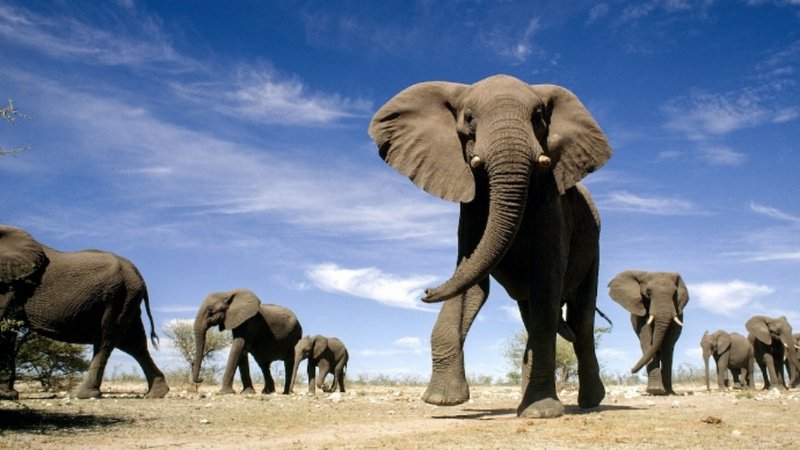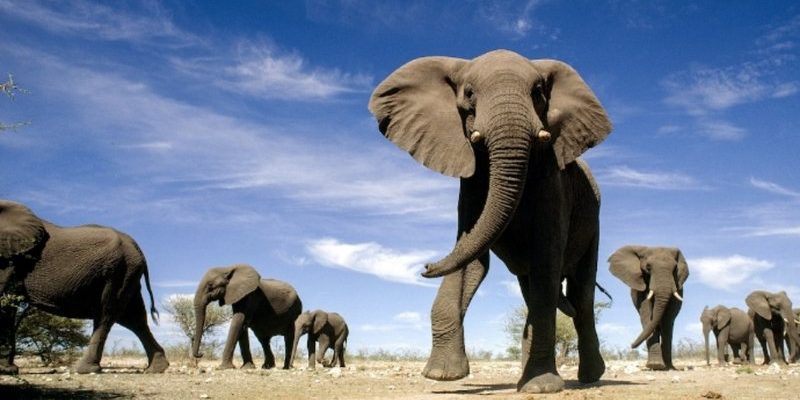
Here’s the thing: the role of the African elephant in its ecosystem isn’t just about what they eat or how they look. It involves a whole network of relationships with other species, soil health, and even climate regulation. Let me explain how these incredible animals contribute to their habitats and why it matters so much.
Keystone Species: Shaping Their Habitat
African elephants are often called keystone species. This means that their presence has a huge influence on the ecosystem. When elephants roam through forests, savannas, and grasslands, they do more than just munch on leaves and shrubs. They create pathways through dense vegetation and knock down trees, which helps maintain open spaces. This, in turn, benefits countless other species.
For example, when elephants uproot trees, they create clearings that allow sunlight to nourish the ground below. This supports new plants, which in turn attract various herbivores and insects. These clearings become vital habitats for smaller mammals, birds, and reptiles. In this way, elephants act as natural gardeners, promoting biodiversity.
Furthermore, their dung serves as a rich nutrient source for the soil. Did you know that elephant dung can be a microhabitat for insects? It’s true! Inside the dung, you’ll find beetles and other critters thriving. So, the cycle continues, as their waste helps to fertilize the landscape, supporting yet more life.
Impact on Vegetation and Biodiversity
The impact of African elephants on vegetation is significant. They prefer certain types of grasses and trees, which means they often over-browse or over-graze specific areas. This creates a mosaic of habitats—some areas lush with plant life while others are more open.
This mosaic isn’t just a patchwork of plants; it’s a tapestry of life. By eating and trampling certain plants, elephants help encourage the growth of various species. Over time, this promotes a diverse ecosystem where many animals can thrive. For instance, when elephants consume a large bush, it opens up the area, allowing smaller plants to flourish, which in turn attracts different animals looking for food or shelter.
Here’s a little story for illustration: in a national park where elephants roam, researchers observed that areas where elephants had fed were teeming with life. Birds flitted about, foraging for insects that thrived in the new growth, while other mammals enjoyed the fresh shoots that emerged in the sunlit patches.
Water Management and Soil Health
Another crucial aspect of an elephant’s role in the ecosystem involves water management. Elephants often dig wells in dry riverbeds, uncovering moisture for themselves and other animals. By doing this, they’re effectively creating water sources that many species rely on during droughts. This behavior showcases their intelligence and understanding of their environment.
Moreover, as elephants move through their territories, they disturb the soil. This activity helps with soil aeration, which lets water and nutrients penetrate deeper. Healthy soil is essential for plant growth, and the more plants grow, the more stable the ecosystem becomes. This process is vital, especially in times of climate change when soil degradation can lead to larger environmental issues.
Think about it: when elephants dig and wallow in muddy water, they also create waterholes that benefit other wildlife. Animals like antelopes, birds, and even insects flock to these spots for hydration and food. The elephants’ activity is, in essence, a communal service to the ecosystem.
Effects on Climate and Carbon Storage
You might be wondering how elephants affect climate and carbon storage. Well, the impact is powerful. Elephants help maintain the structure of forests that absorb carbon dioxide from the atmosphere. Healthy, diverse forests are critical for combatting climate change, as they act as carbon sinks, storing carbon and releasing oxygen.
By allowing new plant growth and creating open spaces, elephants maintain a balance that can help reduce overall greenhouse gases. Each time they uproot a plant, it opens space for younger and often faster-growing plants that can absorb more carbon. As these plants flourish, they take part in the delicate dance of carbon storage, ultimately helping to fight climate change.
As an example, studies have shown that regions with thriving elephant populations tend to have better forest health, with more carbon being stored in the soil and vegetation. This isn’t just important for the environment; it’s crucial for the health of the planet.
Human-Elephant Relationships and Conservation
The relationship between humans and African elephants can be complicated. In some regions, elephants can cause damage to crops, leading to conflicts with local farmers. However, understanding their role in the ecosystem can foster a more harmonious coexistence.
Conservation efforts are key in educating communities about the benefits of elephants. When people recognize that elephants help support biodiversity, water availability, and even climate health, they might be more inclined to protect these magnificent creatures. Strategies like creating wildlife corridors or using sustainable farming practices can minimize conflicts while allowing elephants to thrive.
Community-based conservation programs have also had success, showing how people can benefit from protecting elephants. Eco-tourism provides financial incentives to safeguard habitats while educating both locals and visitors about the importance of these animals.
The Future of African Elephants and Their Ecosystem
The future of African elephants and their role in the ecosystem hangs in the balance. Habitat loss, poaching, and climate change are mounting threats that could disrupt their delicate contributions. If elephants decline, the ramifications will ripple through their ecosystems, affecting countless other species and the health of the environment itself.
The more we learn about their importance, the more motivation we have to protect these gentle giants. Supporting conservation efforts is crucial—not just for elephants, but for the entire ecosystems they help sustain. Each step toward conserving their habitats can create a better future for both wildlife and humans.
In closing, African elephants are not just magnificent animals; they are keystone players in our natural world. Their roles as ecosystem engineers, water managers, and carbon stabilizers highlight how interconnected life is. By recognizing their importance, we take a step toward preserving not only the elephants but the entire ecosystems they represent—making our planet a better place for all its inhabitants.

